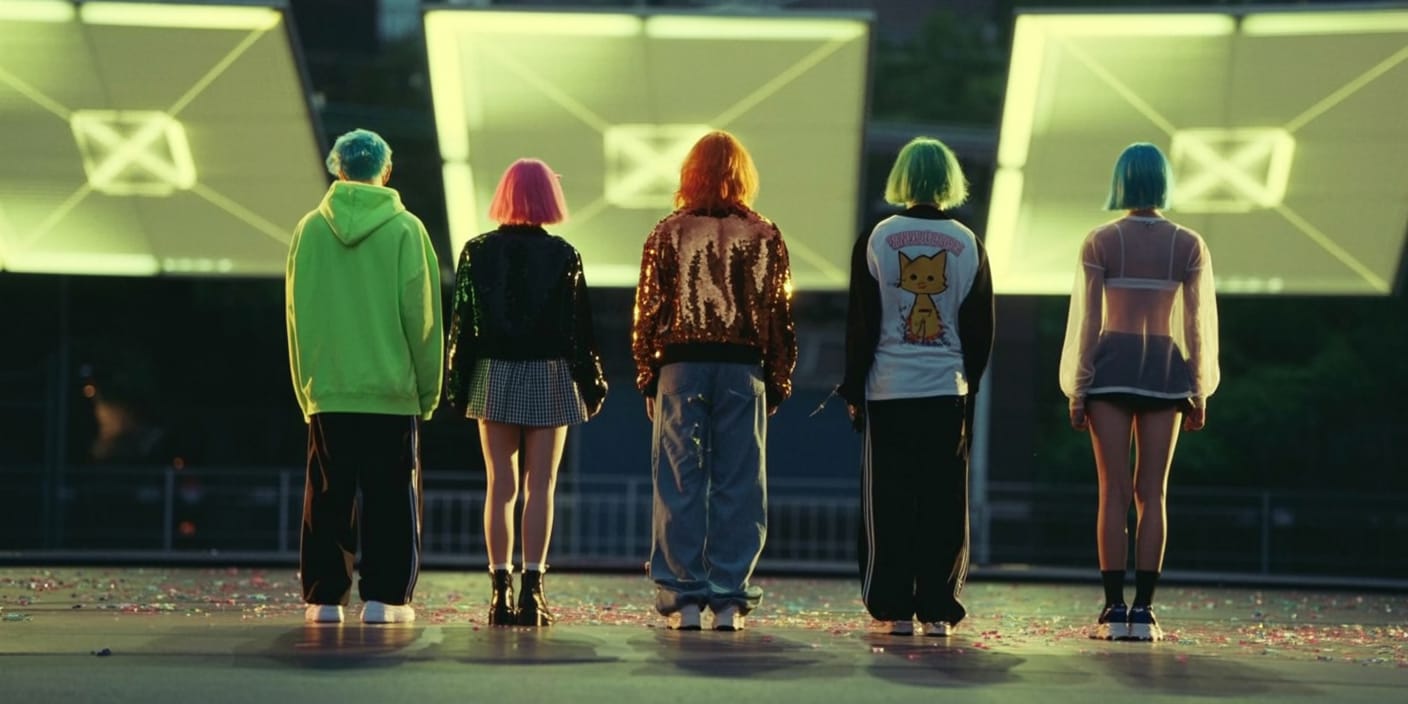
1. Global Accessibility Through Digital Platforms
The digital age has been a game-changer for K-Pop. Platforms like YouTube, Spotify, and TikTok have made K-Pop more accessible than ever. Groups like BTS, BLACKPINK, and newer acts like NewJeans and ENHYPEN dominate streaming services with billions of views and streams. TikTok, in particular, has amplified K-Pop’s reach, with fans creating viral dance challenges and lip-sync videos to songs like Stray Kids’ “Chk Chk Boom” or aespa’s “Supernova.” These platforms allow K-Pop to transcend language barriers, as catchy melodies and visually stunning music videos captivate audiences worldwide.
2. Innovative Music and Production
K-Pop’s signature blend of genres—pop, hip-hop, EDM, R&B, and even rock—creates a versatile sound that appeals to diverse audiences. The industry’s top-tier production, with intricate choreography, high-budget music videos, and polished aesthetics, sets it apart. For instance, groups like ATEEZ and LE SSERAFIM consistently push creative boundaries with concept-driven storytelling in their albums, blending futuristic themes with relatable emotions. This innovation keeps fans hooked and attracts new listeners seeking fresh, dynamic music.
3. Engaged and Organized Fandoms
K-Pop fandoms, often called “stan” communities, are a driving force behind the genre’s trends. Fans of groups like TWICE or SEVENTEEN organize massive streaming parties, coordinate social media campaigns, and even fund billboards to promote their favorite artists. These dedicated fanbases, armed with hashtags like #BTSARMY or #ENGENES, create viral moments on platforms like X, amplifying K-Pop’s visibility. Their loyalty translates into chart-topping success, as seen with BTS’s consistent Billboard Hot 100 presence or ITZY’s global tour sellouts.
4. Cultural Influence and Soft Power
South Korea’s strategic use of soft power has elevated K-Pop as a cultural export. The government and entertainment agencies like HYBE and SM Entertainment invest heavily in global promotion, hosting world tours, fan meetings, and collaborations with Western artists. For example, BLACKPINK’s Lisa collaborated with global stars like Rosalía in 2025, blending K-Pop with Latin influences. Additionally, K-Pop’s fashion, beauty trends, and even Korean language learning have surged in popularity, with fans worldwide embracing Hallyu (the Korean Wave).
5. Relatability and Authenticity
K-Pop artists often share personal stories through their music, addressing themes like mental health, self-love, and youth struggles. Songs like TXT’s “0X1=LOVESONG” or IU’s “Jam Jam” resonate with listeners by combining catchy beats with meaningful lyrics. Moreover, idols engage directly with fans through platforms like Weverse or Instagram Live, fostering a sense of intimacy. This authenticity, paired with rigorous training and talent, makes K-Pop stars relatable yet aspirational figures.
6. Crossover Appeal and Global Collaborations
K-Pop’s ability to collaborate with international artists and brands has broadened its appeal. In 2025, acts like NCT and Red Velvet have worked with Western producers, while brands like Nike and Louis Vuitton partner with K-Pop idols for global campaigns. These crossovers introduce K-Pop to new audiences, as seen with Jungkook’s solo track “Euphoria” remixed by global DJs or Rosé’s appearance at high-profile fashion events. Such partnerships keep K-Pop fresh and relevant in the global entertainment landscape.
Conclusion
K-Pop’s current trendiness is no accident—it’s the result of strategic innovation, global outreach, and an unparalleled connection with fans. Its ability to adapt to digital trends, produce high-quality content, and foster a sense of community ensures that K-Pop remains a dominant force in 2025 and beyond. Whether you’re a casual listener or a dedicated stan, K-Pop’s infectious energy is impossible to ignore.
